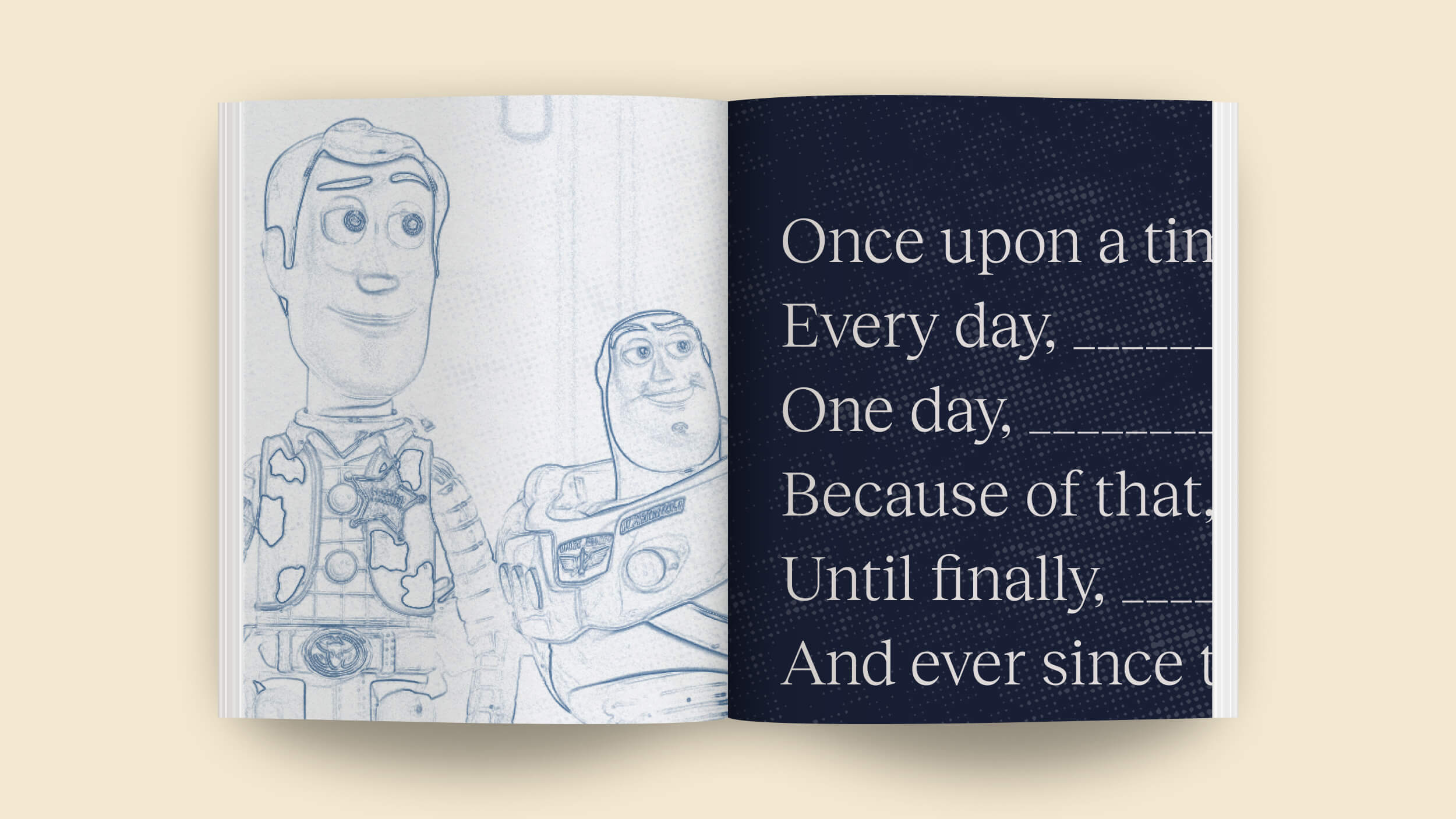How to pivot like a ballerina in the turbulent age of AI

- All successful companies need to move with the winds of change. And AI is a typhoon.
- The best way to learn how to pivot is to observe those who have done so already.
- The agility required for corporate pivoting also applies to personal switch-ups.
Everyone has their own favorite pivot story. Twitter was a podcast curator that turned to social networking; Flickr was an online roleplaying game and pivoted to photo-sharing; and Shopify once just sold snowboards. Heck, even Johannes Gutenberg pivoted from selling relics to inventing the printing press when he saw an opportunity. Pivoting is as old as good business — if you want to get rich and stay rich, you have to sway a little.
Pivots — whether personal career swerves or corporate course changes — are the natural response to new times and fresh challenges. When the winds of change blow, a successful company is one that bends like the willow. And AI is not so much a wind as a category-five typhoon. One way to learn how to pivot successfully is to take a lesson from those who’ve already done so. To do just that, Big Think met with Angie Westbrock, the CEO of Standard AI. We talked about her personal journey and how her company is looking to adapt to the age of AI.
Focus on mastering your day job
Over the course of a career, you’re going to need to pivot. This might be taking on new roles or learning new skills in your existing company, or it might be changing course altogether. Westbrock’s career pivot wasn’t without its challenges. Early on, she navigated the male-dominated manufacturing industry without an MBA, unlike many of her competitors. She had two choices: play the safe hand and follow the standard path, or do things a bit differently. Her mentor’s advice helped her decide: “If doing the MBA at night is going to distract you from being better at your job during the day, don’t do it.” It’s a tip she’s carried with her, and it’s one we all can learn from. Before you turn to all the shiny distractions and before you do all those “I ought to do this” things, make sure you’re incredible at your job.
Westbrock faced a significant challenge when she decided to transition from a stable career in manufacturing to the nascent tech industry. The move meant a substantial change. As she told Big Think, “I took a massive pay cut to go to an early-stage company. I went from having 600–800 people on my team to eight. I was having the conversation with my husband one night, and I said, ‘You know, I’m going to get this VP title if I stay [at my current company]. This is what I’m working toward. But I just really want to try this start-up; I believe in it so much.'”
Westbrock’s leap was motivated by her faith in the tech product she was joining. It was a brave and nerve-wracking moment, but anxious energy can often be harnessed for amazing things. And so she did.
Online perks for offline work
When Westbrock joined Standard AI, she and the company faced another major pivot. Standard AI originally focused on autonomous checkout technology but it didn’t scale up to reach the mass market. And so, they shifted their focus to deploying their AI algorithms to solve other retail problems.
Westbrock explained, “We said, ‘Now we have this technology — and it has applications well beyond autonomous checkout. So, we used our technology to instead focus on prevention, inventory management, and really rich insights around what’s happening inside those stores to provide data and analytics that just haven’t been possible before.”
Standard AI’s autonomous checkouts were doing okay, but the technology they were built on was collecting something even more useful: metrics. The real revelation, and the basis of the pivot, was when Standard AI saw a hole in the market that their technology could fill. E-commerce stores had access to a bevy of data with tools like Google Analytics, which gave them an advantage brick-and-mortar stores lacked. The move from Standard AI was “to provide that same level of data in a physical space that was once only available on an e-commerce site.”
After the checkout
So, what can we garner from Westbrock and Standard AI’s story? Here are three general tips we can all learn and hope to apply to our lives.
Passion means energy. Westbrock’s career moved with the power of her passion-driven decisions. “If you’re working on something that you love, it will bring out the best in you, and those opportunities for advancement will come,” she advised. Pursuing roles that align with personal interests can often lead to greater job satisfaction and career growth. It’s advice well supported by a great many studies.
Energy means growth. Significant career changes often come with risks, including financial ones. Westbrock’s move from a secure manufacturing career to a startup involved substantial sacrifices, but as we’ve seen, she put that energy to good use. It’s often not simply “work” that bothers people, but the mindless drudgery that we cannot get energized about. Faced with a safe, but dull, option and a more exciting but potentially risky option, Westbrock’s advice suggests the latter.
Skills, not products: Standard AI’s ability to pivot successfully was partly due to their skill in applying underlying software and algorithms in new contexts. At Standard AI, the shift from autonomous checkout to broader AI applications in retail demonstrated the value of transferable skills. You have a certain set of talents — talents that can be used in a host of exciting ways. Don’t focus on what you’ve already done or what you’re working on right now, but what do you, uniquely, bring to the table? Where else could these abilities apply?




